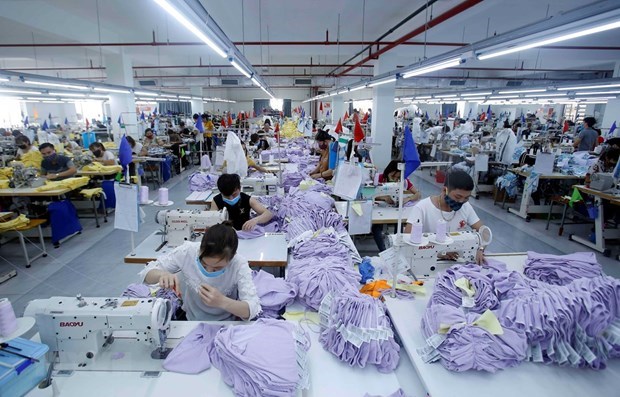 Economy
Economy

A diversified supply chain and numerous free trade agreements (FTAs) have set up the stage for a strong come back for Việt Nam's textile sector, said experts and industry leaders.

|
| Workers at a textile company in northern Việt Nam. Demand for Việt Nam''s footwear and textile products in the EU were forecast to increase by 50 per cent and 67 per cent, respectively by 2025. — VNA Photo |
HÀ NỘI — A diversified supply chain and numerous free trade agreements (FTAs) have set the stage for a strong comeback for Việt Nam's footwear and textile sector, said experts and industry leaders.
Despite the COVID-19 pandemic, the sector reported strong export figures for 2020 with foreign brands and partners already saying they would either increase production or place additional orders from Vietnamese textile makers in 2021, according to the Vietnam Textile and Apparel Association (VITAS).
"In the short-run, firms should be trying to seek new markets and diversify their products. In the long-run, they must eye sustainable development and advanced automation," said Đỗ Quỳnh Chi from the Ministry of Labour, Invalids and Social Affairs.
The pandemic encouraged domestic firms to connect among themselves in order to secure supply materials and establish joint production operations. It was especially important for smaller firms as they were able to learn from bigger players, to adopt better technologies and access more advanced machines.
Nguyễn Văn Thời, CEO of textile maker Thái Nguyên-based TNG, said international supply chain disruptions caused by the pandemic forced his firm to look for domestic suppliers.
In addition, FTAs such as the EU-Vietnam Free Trade Agreement (EVFTA) and the Comprehensive and Progressive Agreement for Trans-Pacific Partnership (CPTPP) set strict standards for textile firms on product origins, forcing firms to source production materials domestically, said VITAS' president Vũ Đức Giang.
Giang said Vietnamese firms retained certain advantages as their products typically fetch higher value and required more sophisticated production techniques compared against competitors. For instance, Vietnamese firms overtook their rivals to become the largest exporter to the US in June this year, a place usually held by Chinese firms.
While Vietnamese firms only hold a modest market share in the EU, the EVFTA, which came into effects on August 1 this year, is said to provide a major boost to Vietnamese exports. Among them are footwear and textile products, which were forecast to increase by 50 per cent and 67 per cent, respectively by 2025.
According to VITAS, demand for textile products in major markets such as the US and the EU is set to return to pre-pandemic levels in the latter half of 2022. The association urged firms to stay connected, to share solutions and to pool their resources to overcome the pandemic as well as to improve management and production efficiency.
Origin agreement with RoK
The Ministry of Industry and Trade (MoIT) and the Ministry of Trade, Industry and Energy of the Republic of Korea (RoK) recently signed an exchange letter on the implementation of the cumulation of origin of textile between the two nations under the EVFTA.
The letter was inked in the framework of the 10th meeting of the Vietnam-RoK Joint Committee on Energy, Industry and Trade Cooperation and the 4th meeting of the joint committee on the implementation of the Vietnam-RoK Free Trade Agreement (VKFTA), the MoIT’s Asia-Africa Market Department said, adding the document is significant in helping Vietnamese firms easily access high-quality textile materials from the RoK for production for export to the EU.
The EU needs to import more than US$250 billion worth of garment and textile products each year. However, Việt Nam accounted for only a 2 per cent share in this potential market, according to the MoIT.
However, according to the commitments of the EVFTA, besides meeting strict quality criteria, to enjoy preferential tariffs local businesses must implement strict origin requirements. Specifically, exports to the EU must use fabric produced in Việt Nam or the EU. The agreement also allows firms to use fabric from countries which have FTAs with both Việt Nam and the EU.
This issue is still a weakness for the local textile and garment industry because most raw materials are imported from countries that have not signed FTAs with the EU.
In this context, Việt Nam negotiated with the EU countries on cumulative rules of origin, allowing Vietnamese exporters to use fabric made by a third-party country that has an FTA with the EU like the RoK.
Before the EVFTA took effect, the MoIT conducted a negotiation with the Korean Ministry of Trade, Industry and Energy to carry out the cumulative rules under the EVFTA. — VNS




